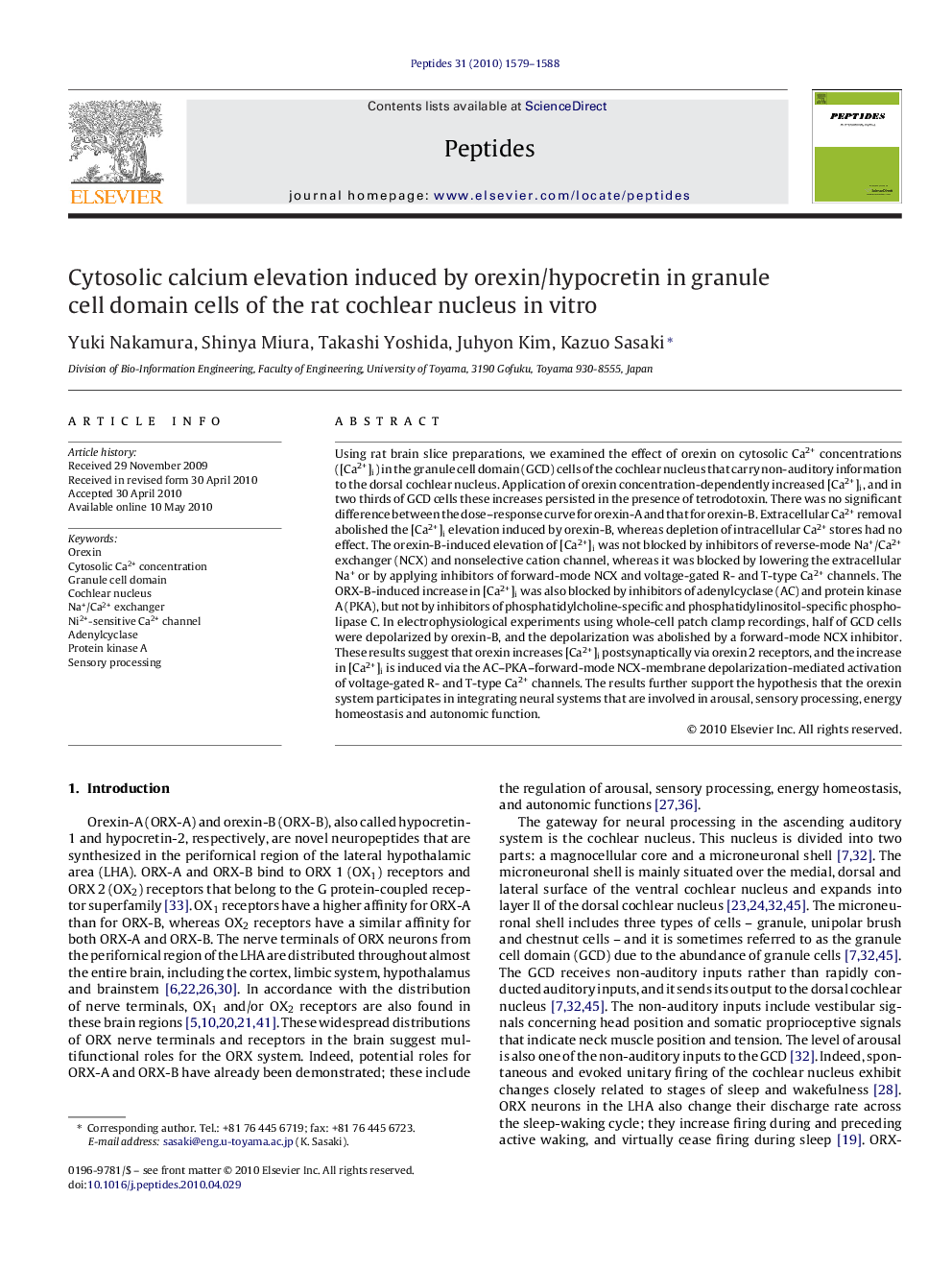| Article ID | Journal | Published Year | Pages | File Type |
|---|---|---|---|---|
| 2006959 | Peptides | 2010 | 10 Pages |
Using rat brain slice preparations, we examined the effect of orexin on cytosolic Ca2+ concentrations ([Ca2+]i) in the granule cell domain (GCD) cells of the cochlear nucleus that carry non-auditory information to the dorsal cochlear nucleus. Application of orexin concentration-dependently increased [Ca2+]i, and in two thirds of GCD cells these increases persisted in the presence of tetrodotoxin. There was no significant difference between the dose–response curve for orexin-A and that for orexin-B. Extracellular Ca2+ removal abolished the [Ca2+]i elevation induced by orexin-B, whereas depletion of intracellular Ca2+ stores had no effect. The orexin-B-induced elevation of [Ca2+]i was not blocked by inhibitors of reverse-mode Na+/Ca2+ exchanger (NCX) and nonselective cation channel, whereas it was blocked by lowering the extracellular Na+ or by applying inhibitors of forward-mode NCX and voltage-gated R- and T-type Ca2+ channels. The ORX-B-induced increase in [Ca2+]i was also blocked by inhibitors of adenylcyclase (AC) and protein kinase A (PKA), but not by inhibitors of phosphatidylcholine-specific and phosphatidylinositol-specific phospholipase C. In electrophysiological experiments using whole-cell patch clamp recordings, half of GCD cells were depolarized by orexin-B, and the depolarization was abolished by a forward-mode NCX inhibitor. These results suggest that orexin increases [Ca2+]i postsynaptically via orexin 2 receptors, and the increase in [Ca2+]i is induced via the AC–PKA–forward-mode NCX-membrane depolarization-mediated activation of voltage-gated R- and T-type Ca2+ channels. The results further support the hypothesis that the orexin system participates in integrating neural systems that are involved in arousal, sensory processing, energy homeostasis and autonomic function.
